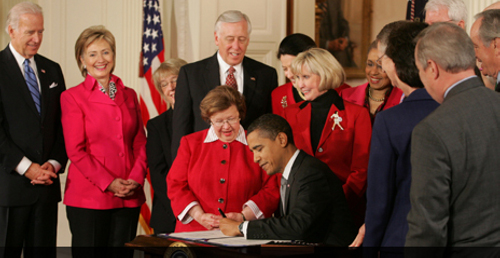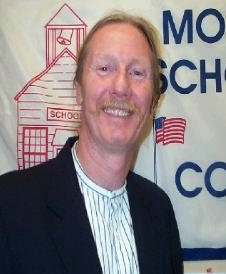- Gale Tompkins-Bischel
Tompkins-Bischel: Jesus and the garbage can
Immediately experiencing a complete disappearance of any hunger for the food that I had just purchased for myself, I approached the young man and handed him my breakfast and a $20 bill that had been floating around in my purse. The gratitude in his sunken eyes was testament to the fact that, in the words of a song by the band, Downhere, “We are a Cathedral made of people, in a Kingdom that the eye can’t see ...”
There’s more to this or any simple act of kindness, for that matter, than might meet the eye: Today’s physicists now believe that our entire universe is made of interconnected strings of energy; that the appearance of separation of matter is an illusion, and that energy can never be destroyed.
Astronomers have also pinpointed a timeframe, around 16 billion years ago, for when this energy began its rapid, eternal dispersal throughout space, but no one thus far has told us exactly where it originated or what caused it to finally have its Big Bang.
Some 2,000 years ago, however, a radical rabbi began stirring up trouble among his peers with wild notions of a Loving Father, a Kingdom and an invitation for all to join the banquet here on Earth. He told his followers that following death, He would be back, that they would know Him in anyone they met – if they just had the eyes to see.
Furthermore, he gave his disciples a mission: Remember me by spreading this message to the whole world, high and low, rich and poor, to every tongue and every nation. What a Kingdom he dreamed of, where everyone could recognize their connectedness, in a beautiful banquet of life and love here in the Kingdom of our own lovely planet!
Unfortunately, His message was/is often misunderstood, twisted, and distorted by a lot of people, who, bless them, thought/think they were/are doing the right thing by Jesus. Even still, can you imagine if the Kingdom actually did come, on Earth as it is in Heaven? (If you are reading this and you have a problem with the whole concept of Heaven, replace the word with Peace, tranquility, etc., like it was for you before you were born. Do you have any recollection of pain or suffering before you were born? No. So just go with that for the moment.)
Many great teachers and leaders have imagined, worked for and even died for such a Kingdom; a Kingdom that, in fact, already exists, albeit mostly invisibly within Earth’s inhabitants. Can this Kingdom become free from its prison within our hearts, so that Earth can be the banquet of peace and justice that so many have envisioned?
I believe so, but freeing this Divine energy we were all born with requires a new perception – from all realms of the religious spectrum. This, in a nutshell, is what I think Jesus came to Earth to teach all of humanity. He knew, long before today’s scientists could prove it, that His life was found everywhere, even down to underneath a rock or inside of a piece of split wood. This is why I know that I met Jesus today at the garbage can.
To folks on the liberal side, I implore you to live up to your “tolerant“ liberal label and not be prejudiced, hateful and discriminatory of the very people whom you think are prejudiced, hateful and discriminatory … Are your enemies’ hateful arguments winning you over? No? Well then, guess what? Your hateful arguments are likely to keep the fire of discontent burning on their side as well.
How can the two sides come together when each side says the other side has to make the first concession? It’s ridiculous to think that you will attract support by being just as ugly as your opposition. Do you disparage people of faith, calling their God silly, or just a myth, or do you proclaim that they must be ignorant or intolerant if they go to a church that you perceive as different or intolerant, or if they go to church at all?
Are you, yourself, ignorant of the fact that Jesus spoke in veiled language and parables for very crucial reasons – and that to throw Him out with the bathwater you, yourself are guilty of being ignorant and intolerant? Do you think you will win converts to your quests for ending the war, protecting the whales, feeding the poor, etc., by repelling millions of potential partners?
Do you realize that you are ignorant of the fact that many people of faith are working harder for a lot of these same causes than you could ever imagine? Are you aware that Jesus was more Liberal than you could even try to be? Standing in your own corner all the time, throwing stones, you are unlikely to see the real picture.
On the conservative side in this country, many people appear to also be greatly inspired by the Bible, which they often use to explain how they arrived at their strict or “family values” viewpoints and interpretations. Let me remind you that God’s new covenant is still in effect, and has been since the most liberal of any priest on the face of the Earth first spoke the words that announced the new law: Love. Every commandment was neatly summed up in that law!
Jesus put an end to the thousands of years of suffering under the burden of hundreds of very rigid, xenophobic and hateful religious rules that kept anger and fear in the forefront of everyone’s life. Can you get past the pre-new covenant times and try doing things Jesus-style? If you want someone to agree with you, open your heart, see Jesus in them and act accordingly.
Many people disagreed with Jesus and look how they treated him. Maybe the person you hate has a point to consider that you hadn’t thought of before. If Christ could forgive the very people who nailed him to the cross, how could you possibly hold on to feelings of anger toward people who don’t share your religion or who don’t vote the way you vote? Is it your business or God’s business? Will you bring more people to the Light by hating them or by loving them? Seriously, how can people possibly “know we are Christians by our love," as the old song goes, if you go around breaking the most important commandment?
Then there are those who think they don't have any religion. Are you one of these? Believe it or not, everyone has a religion! For some it is conspicuously found in the honest following and devotion of the words of great Avatars, but for others it is found in money, success, playing video games, bossing your employees around, keeping a clean house, surfing the Internet, etc., ad infinitum. Do some people make keeping their car washed and polished into a religion? The answer is yes!
To discover your religion, just figure out where most of your attention goes, because that’s where the bulk of your energy flows. Someone might be the biggest fan of Buddha, or maybe he proudly wears a golden crucifix around his neck, for example, but if his life’s energy is given over to becoming rich and powerful, his religion is not Buddhism or Christianity; it is money that he worships.
Today when I fed the man in the parking lot, not only was I feeding him, but I was feeding Jesus, and I was feeding myself. We are, all three, interconnected in the “cathedral made of people” created by the God of the Universe. From a scientific standpoint, the energy that freed itself from my body probably resulted in a corresponding release of his happiness neuro-peptides, which hopefully also caused the movement of neurons that wired together to form a memory of this simple act of giving.
Someday this received love might be remembered and shared with others, thereby keeping the flow of love on its neverending expansion. Will it save his life, get him off the streets, cure his addictions or be the one thing that gave him reason to live for another day? Who knows. I’m not in the business of deciding that. I can only do my part each moment in helping to spread the God-given Love energy to everyone I encounter, in whatever way I can.
I personally choose to worship the One who gave His life for teaching simply and most humbly that we can discover the Kingdom by remembering always that our path must be walked with Love – the eternal energy gift that exists inside and outside us. A church is nice, a Bible is nice, putting money in the offering plate on Sunday is nice, but the main point is to be the Love that we so desperately want to see in the Kingdom.
Some may call Him crazy to actually die for such a simple idea, but if He could die for it, I can certainly live by it; in the pew and at the garbage can.
Gale Tompkins-Bischel attends United Christian Parish in Lakeport.
{mos_sb_discuss:4}





 How to resolve AdBlock issue?
How to resolve AdBlock issue? 



